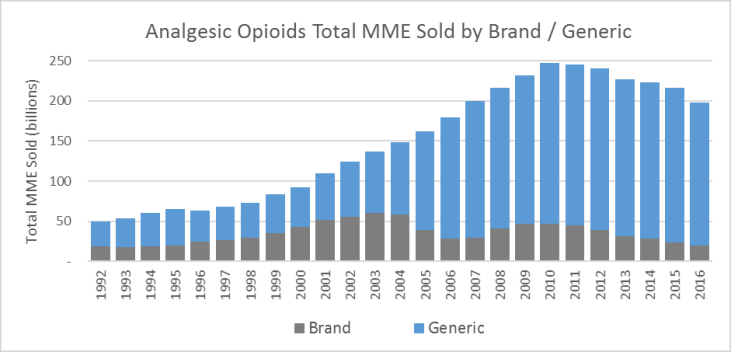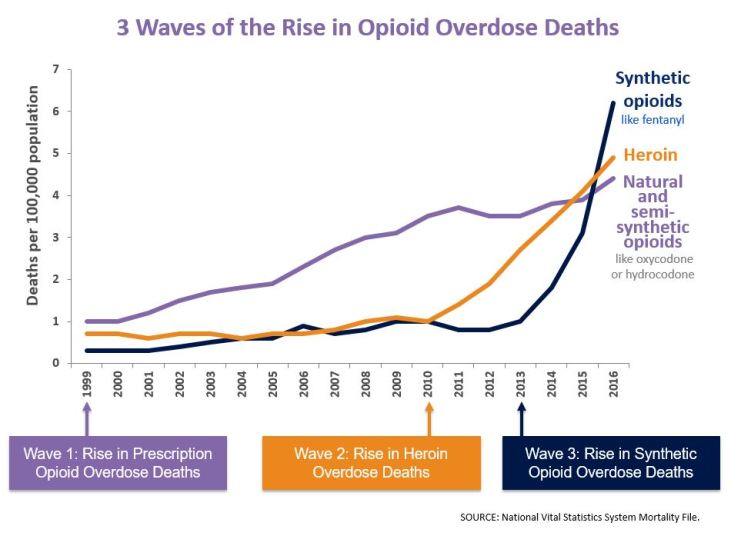Earlier this week it was reported that Walmart won’t provide more than 7 days worth of opioids for some prescriptions. CVS took the similar steps a few months ago. Over the past couple of years most insurers, pharmacy benefit managers and pharmacy chains have put restrictions on opioid dispensing. Last month Medicare also gave guidance to put brakes on opioid prescribing. This restricting of opioid dispensing began in earnest after the CDC released its Guideline for Prescribing Opioids for Chronic Pain on March 18, 2016. Unfortunately, to those of us in the field of addiction this has the feel of driving while looking in the rearview mirror — opioid prescribing had already been falling since its peak in 2010. In 2016, total opioids sold in the US were less than in 2007.

The problem with driving while being too focused on where have been is that we miss what’s going on in front of us. What is happening, of course, is that we are in the 3rd wave of opioid overdose deaths. This wave is driven by illicitly manufactured fentanyl and drugs like it. No amount of restriction of opioid prescribing will help us bring this wave under control.

In fact, the opioid overdose epidemic is getting worse. With each set of new restrictions — in 2010, abuse deterrent Oxycontin® was introduced — there appears to be shift towards increasingly more potent illicit opioids. Insurance companies, pharmacies and CMS won’t be able to solve this. It’s not that they don’t have a role in helping reduce opioid prescribing. It’s just that with the evolution of the opioid epidemic from legal opioids to illegal opioids there’s no longer an easy solution to this. It requires a radical shift in how we as a society think about stigma, addiction and drug prohibition. And there’s no indication yet that we, through our elected representatives, are thinking outside the box. Yet.

